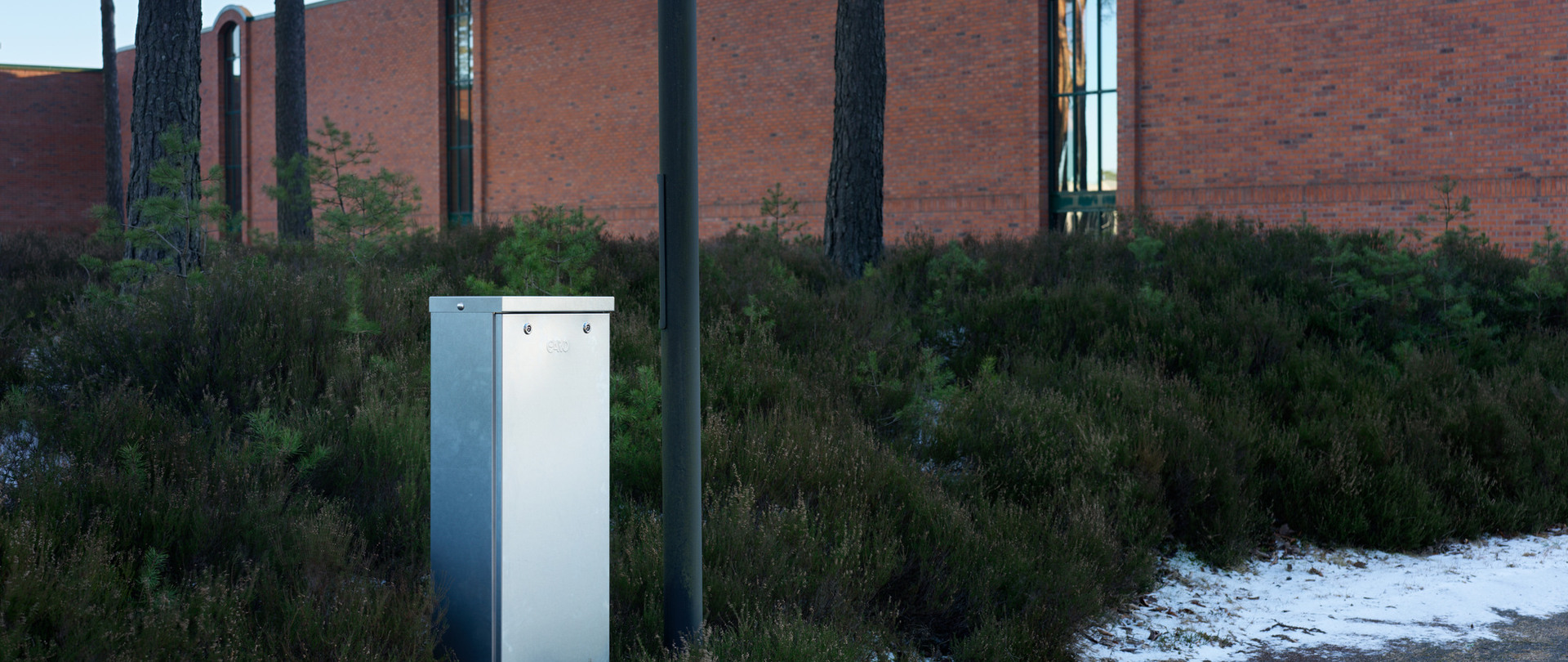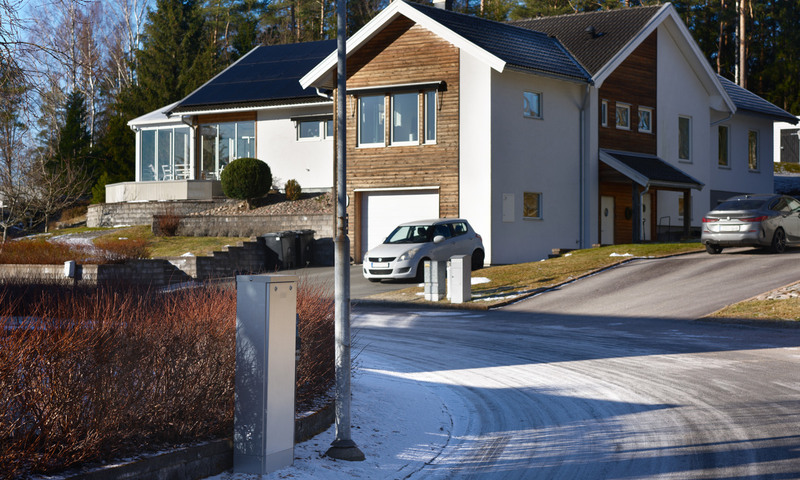
Cable cabinets for lighting and distribution
A sustainable choice for the future.
We are now introducing a new cable cabinet for lighting and distribution. With a new, contemporary and functional design and made from the environmentally friendly and self-healing material Magnelis®, this truly is a cabinet you can rely on for a long time to come. The standout features of our cable cabinets include their safety, ease of use, energy efficiency and smart control.

Energy-efficient street lighting cabinet.
Road junctions, streets, squares, car parks, green areas, sports fields, cycle paths and pavements – all of these are examples of places in our communities where dependable lighting is essential for us to be able to see, be seen and feel safe when darkness falls. These environments have to withstand harsh conditions due to climate, traffic and snow clearing. As a consequence, in addition to finding sustainable and dependable lighting, it is also important to choose a solution that is both energy efficient and easy to install when it comes to the power supply and smart control.

Magnelis® – for the environment.
All aspects of sustainability are important to us. This is why we are proud to be the first to market with cable cabinets with a housing made from Magnelis®, a metallic coated steel. This material gives our cabinets far superior self-healing properties and stronger corrosion resistance in demanding or highly alkaline environments, when compared to the equivalent hot-dip galvanised coatings. This means that our cable cabinet can handle harsh climates at all latitudes and all weathers.
Magnelis® is an excellent choice for the environment since its production entails as much as an 80% reduction in harmful emissions compared to other equivalent materials. Moreover, Magnelis® is the only magnesium coating that RISE has approved for the highest corrosion protection category, C5. Naturally, we have also ensured that our cable cabinet has the highest impact resistance rating, IK10, to curb any vandalism or other external interference.
